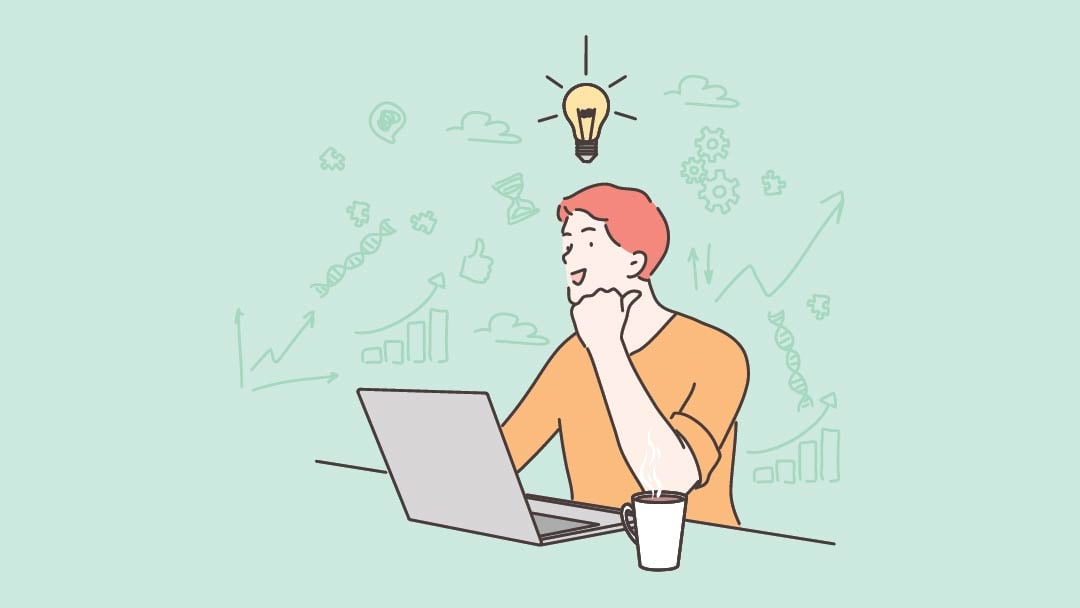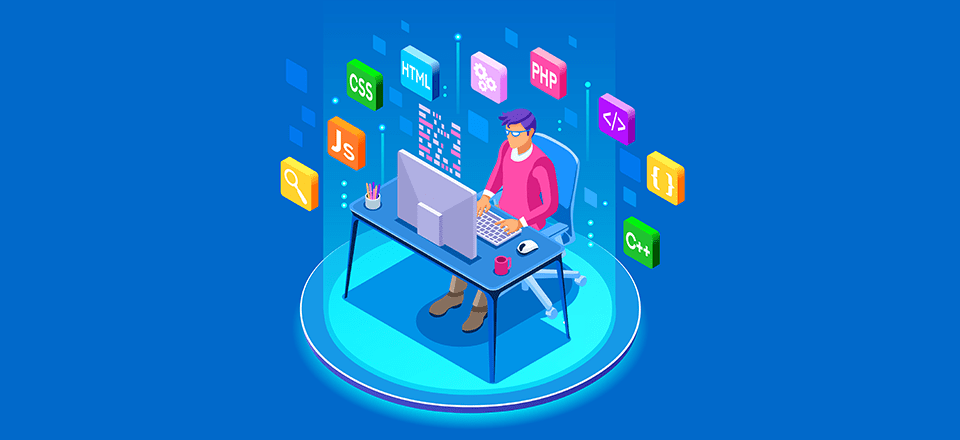All Categories
Featured
Table of Contents
- – Web Design And Applications - W3c Tips and Tri...
- – Web Design - Uci Division Of Continuing Educa...
- – Web Design And Applications - W3c Tips and Tr...
- – The Top 10 Most Important Elements Of A Websi...
- – Lifted Logic: Web Design In Kansas City - Seo...
- – What Is Web Design, How To Do It Right And Be...
- – Web Designer: Learn The 9 Skills You Need In...
- – Html Responsive Web Design - W3schools Tips ...
- – Boxcar Studio - Wordpress & Drupal Web Desig...
- – Custom Website Design And Marketing - Inmoti...
- – Figma: The Collaborative Interface Design To...
Web Design And Applications - W3c Tips and Tricks:
Quick summary Functionality and the utility, not the visual design, figure out the success or failure of a site. Since the visitor of the page is the only individual who clicks the mouse and therefore decides everything, user-centric design has developed as a standard approach for effective and profit-oriented website design - web design frederick md.
and the utility, not the visual style, figure out the success or failure of a site. Given that the visitor of the page is the only individual who clicks the mouse and for that reason chooses everything, user-centric style has actually ended up being a basic approach for successful and profit-oriented website design. If users can't use a feature, it may as well not exist.
g. where the search box ought to be placed) as it has already been carried out in a number of articles; rather we concentrate on the techniques which, utilized effectively, can cause more sophisticated style decisions and streamline the process of viewing presented info. Please discover that you may be interested in the usability-related articles we have actually released before: Principles Of Great Website Style And Reliable Website Design Guidelines, In order to utilize the concepts effectively we initially need to understand how users engage with websites, how they believe and what are the basic patterns of users' behavior.
Web Design - Uci Division Of Continuing Education Tips and Tricks:
Visitors glimpse at each brand-new page, scan some of the text, and click the first link that catches their interest or vaguely resembles the important things they're looking for. There are big parts of the page they don't even look at. Many users look for something fascinating (or useful) and clickable; as quickly as some appealing candidates are discovered, users click.
If a page offers users with top quality content, they are ready to compromise the material with ads and the style of the site. This is the reason that not-that-well-designed sites with top quality material get a lot of traffic over years. Content is more vital than the style which supports it.

Users don't check out, they scan. Notice how "hot" locations abrupt in the middle of sentences. This is common for the scanning procedure. Very basic principle: If a site isn't able to satisfy users' expectations, then designer stopped working to get his job done properly and the company loses money. The greater is the cognitive load and the less intuitive is the navigation, the more willing are users to leave the website and search for options.
Web Design And Applications - W3c Tips and Tricks:
Neither do they scan website in a linear style, going sequentially from one website area to another one. Rather users satisfice; they pick the very first affordable alternative. As quickly as they find a link that seems like it may cause the goal, there is an extremely good opportunity that it will be instantly clicked.
It does not matter to us if we comprehend how things work, as long as we can use them. If your audience is going to imitate you're developing billboard, then style great signboards." Users wish to have the ability to manage their browser and depend on the consistent data discussion throughout the website.
If the navigation and website architecture aren't instinctive, the variety of question marks grows and makes it harder for users to understand how the system works and how to get from point A to point B. A clear structure, moderate visual ideas and quickly recognizable links can assist users to find their path to their aim.
The Top 10 Most Important Elements Of A Website Design Tips and Tricks:

claims to be "beyond channels, beyond products, beyond distribution". What does it mean? Since users tend to check out sites according to the "F"-pattern, these 3 statements would be the first components users will see on the page once it is packed. Although the design itself is easy and user-friendly, to comprehend what the page is about the user requires to search for the answer.
As soon as you've attained this, you can interact why the system is beneficial and how users can gain from it. Individuals won't use your web website if they can't discover their way around it. 2. Don't Misuse Users' Perseverance, In every job when you are going to provide your visitors some service or tool, attempt to keep your user requirements very little.
Newbie visitors want to, not filling long web forms for an account they may never use in the future. Let users check out the site and find your services without requiring them into sharing personal information. It's not affordable to require users to enter an email address to evaluate the feature.
Lifted Logic: Web Design In Kansas City - Seo - Website ... Tips and Tricks:
Stikkit is a perfect example for an user-friendly service which needs nearly nothing from the visitor which is inconspicuous and soothing. Which's what you want your users to feel on your web site. Apparently, Mite needs more. The registration can be done in less than 30 seconds as the type has horizontal orientation, the user does not even require to scroll the page.
A user registration alone suffices of an impediment to user navigation to minimize inbound traffic. 3. Manage To Focus Users' Attention, As websites supply both fixed and dynamic material, some elements of the user interface bring in attention more than others do. Clearly, images are more attractive than the text simply as the sentences marked as strong are more attractive than plain text.
Focusing users' attention to specific locations of the website with a moderate use of visual elements can assist your visitors to get from point A to point B without thinking of how it actually is supposed to be done. The less enigma visitors have, the they have and the more trust they can develop towards the company the site represents.
What Is Web Design, How To Do It Right And Best Skills - Rock ... Tips and Tricks:
4. Pursue Feature Exposure, Modern web styles are typically slammed due to their technique of assisting users with visually appealing 1-2-3-done-steps, big buttons with visual impacts and so on. From the design point of view these aspects really aren't a bad thing. On the contrary, such as they lead the visitors through the website content in a very basic and easy to use method.
The site has 9 main navigation options which show up at the very first glance. The choice of colors may be too light. is an essential concept of effective interface design. It does not actually matter how this is achieved. What matters is that the material is well-understood and visitors feel comfortable with the method they engage with the system.
Rather a rate: just what visitors are looking for. An ideal service for efficient writing is touse brief and concise phrases (come to the point as quickly as possible), use scannable design (categorize the content, utilize numerous heading levels, utilize visual components and bulleted lists which break the flow of consistent text blocks), usage plain and unbiased language (a promotion does not require to sound like ad; provide your users some reasonable and objective reason why they must utilize your service or stay on your site)6.
Web Designer: Learn The 9 Skills You Need In 2022 - Skillcrush Tips and Tricks:
Users are rarely on a website to take pleasure in the design; in addition, in most cases they are looking for the info in spite of the style - web design frederick md. Make every effort for simpleness instead of complexity. From the visitors' viewpoint, the very best website design is a pure text, with no advertisements or more content blocks matching exactly the question visitors used or the content they've been trying to find.
Finch plainly presents the details about the website and gives visitors a choice of choices without overcrowding them with unneeded material. 7. Do not Hesitate Of The White Space, In fact it's actually difficult to overestimate the value of white area. Not only does it help to for the visitors, however it makes it possible to perceive the information presented on the screen.
Complex structures are harder to check out, scan, examine and deal with. If you have the choice in between separating two style segments by a noticeable line or by some whitespace, it's normally better to utilize the whitespace service. (Simon's Law): the better you handle to offer users with a sense of visual hierarchy, the much easier your content will be to view.
Html Responsive Web Design - W3schools Tips and Tricks:
The very same conventions and rules should be applied to all elements.: do the most with the least quantity of hints and visual components. Clarity: all elements should be developed so their meaning is not unclear.
Conventions Are Our Friends, Conventional style of site elements does not lead to an uninteresting web site. In reality, as they reduce the discovering curve, the requirement to determine how things work. It would be an usability nightmare if all sites had various visual presentation of RSS-feeds. That's not that different from our regular life where we tend to get used to standard principles of how we organize data (folders) or do shopping (positioning of items).
comprehend what they're anticipating from a website navigation, text structure, search positioning etc. A common example from use sessions is to translate the page in Japanese (assuming your web users don't know Japanese, e. g. with Babelfish) and offer your functionality testers with a job to discover something in the page of various language.
Boxcar Studio - Wordpress & Drupal Web Design ... - Ann Arbor Tips and Tricks:
Steve Krug suggests that it's better to, but make the most of conventions when you do not. 10. Test Early, Test Typically, This so-called TETO-principle needs to be used to every web style task as usability tests frequently supply into significant problems and issues related to a provided layout. Test not too late, not insufficient and not for the incorrect factors.
Some essential points to remember: according to Steve Krug, and testing one user early in the job is better than testing 50 near the end. Accoring to Boehm's first law, errors are most frequent throughout requirements and design activities and are the more costly the later they are eliminated.
That suggests that you develop something, test it, fix it and after that evaluate it again. There might be issues which have not been discovered throughout the preliminary as users were practically obstructed by other issues. functionality tests. Either you'll be pointed to the issues you have or you'll be pointed to the absence of significant style defects which is in both cases a beneficial insight for your task.
Custom Website Design And Marketing - Inmotion Hosting Tips and Tricks:

This holds for designers also. After you have actually dealt with a website for few weeks, you can't observe it from a fresh perspective any longer. You understand how it is developed and for that reason you understand exactly how it works you have the knowledge independent testers and visitors of your site would not have.
It can be connected to other locations such as graphic style, user experience, and multimedia arts, however is more appropriately seen from a technological viewpoint. It has actually become a big part of individuals's everyday lives. It is tough to picture the Internet without animated graphics, different styles of typography, background, videos and music.

During 1991 to 1993 the World Wide Web was born. Text-only pages could be viewed using a simple line-mode internet browser. There had been no integrated method to graphic style components such as images or sounds.
Figma: The Collaborative Interface Design Tool. Tips and Tricks:
The W3C was created in October 1994 to "lead the World Wide Web to its complete potential by developing typical procedures that promote its evolution and guarantee its interoperability." This dissuaded any one company from monopolizing a propriety web browser and programs language, which might have altered the result of the Internet as a whole.
As this has actually taken place the technology of the web has actually likewise moved on. There have actually likewise been significant modifications in the method people use and access the web, and this has altered how sites are developed.
Learn more about Lovell Media Group LLC or TrainACETable of Contents
- – Web Design And Applications - W3c Tips and Tri...
- – Web Design - Uci Division Of Continuing Educa...
- – Web Design And Applications - W3c Tips and Tr...
- – The Top 10 Most Important Elements Of A Websi...
- – Lifted Logic: Web Design In Kansas City - Seo...
- – What Is Web Design, How To Do It Right And Be...
- – Web Designer: Learn The 9 Skills You Need In...
- – Html Responsive Web Design - W3schools Tips ...
- – Boxcar Studio - Wordpress & Drupal Web Desig...
- – Custom Website Design And Marketing - Inmoti...
- – Figma: The Collaborative Interface Design To...
Latest Posts
Awwwards - Website Awards - Best Web Design Trends Tips and Tricks:
Web Design Vs. Web Development - Upwork Tips and Tricks:
Learning Web Design: A Beginner's Guide To Html, Css ... Tips and Tricks:
More
Latest Posts
Awwwards - Website Awards - Best Web Design Trends Tips and Tricks:
Web Design Vs. Web Development - Upwork Tips and Tricks:
Learning Web Design: A Beginner's Guide To Html, Css ... Tips and Tricks: